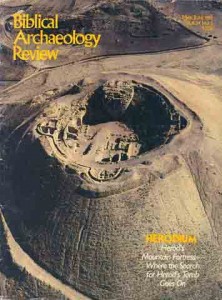Scholars’ Corner: Correlation Established Between Silver Content of Coins and Economic Prosperity
Modern archaeology tries to reconstruct from every clue available all aspects of ancient society—its economy and sociology, as well as its political history and building techniques. The possibilities, as BAR readers know, are infinite.
In this world of specialization, one scholar may dig up the evidence, another may analyze it and still a third may discover its significance.
Yaakov Meshorer of the Israel Museum, one of the world’s leading numismatists, was recently studying and analyzing Nabataean coins that had been dug up at numerous sites in Israel, Jordan and the Sinai. These enigmatic people inhabited and often dominated the desert and trade routes between the fourth century B.C. and the first century A.D. They also built magnificent desert cities, like Petra, Mamshit and Avdat. They left thousands of inscriptions in their own alphabet and language carved in the rocks of the desert trade routes.
Meshorer tried to squeeze from Nabataean coins every bit of knowledge concerning these elusive people. One of the things he did was to measure the silver content of their coins to see what the variation was. This was done by the specific gravity method.
Already a library member? Log in here.
Institution user? Log in with your IP address.

